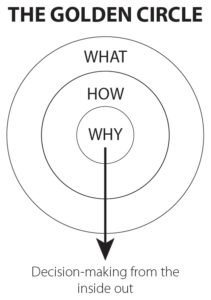This is the fourth in a series of columns about Japan Inc.’s ultimate global challenge: marketing (if you came here from somewhere else, read this, this and this first).
There is a lack of understanding (or training) in marketing basics within many companies. How can you execute Marketing 4.0 if you never learned Marketing 1.0?
 Consider the military… Anyone who enters any branch of the military in any country, no matter what your position or rank, has to go through basic training, often called boot camp.
Consider the military… Anyone who enters any branch of the military in any country, no matter what your position or rank, has to go through basic training, often called boot camp.
Basic training prepares recruits for all elements of service: physical, mental and emotional. It gives service members the basic discipline and tools necessary to perform the roles that will be asked of them. No matter which branch of the service a recruit chooses, basic training is an intense experience that teaches everyone to understand, respect and follow the chain of command.
No matter how old you are or how much experience you have, it is important to go back to the basics as your ultimate guide. Every person in a marketing job should have the same understanding of the marketing basics so that the entire marketing team is aligned and on the same page. Everyone should metaphorically know how to handle a rifle, load it, aim, pull the trigger and hit the target!
Marketing Communications needs strategic foundation
What follows are some basic points for companies to master in order to develop and execute a marketing strategic plan. Before any building is constructed it needs a solid foundation or it will eventually collapse. It is the same with marketing communications: a strategic foundation must be built or it will be ineffective and waste money. A solid strategic foundation will lead to an effective and efficient marketing communications program.
Consumers today face a plethora of choices and are bombarded daily with hundreds of competing offerings fighting for their attention to buy. Make it easier for consumers to tune into a brand’s marketing message and transform them into customers. Please follow, and always remember, these two basic principles when planning and evaluating marketing communications.
K.I.S.S. = Keep It Simple Stupid
This is an important consideration when formulating the marketing strategy by searching for the obvious. An obvious strategy is simple, easy to understand, evident and powerful. Common sense is your guide; it is wisdom shared by all. Simple ideas tend to be obvious ideas because they have a ring of truth about them.
W.I.I.F.M = What’s In It for Me?
The questions every consumer asks themselves when confronted with any communication about a brand is, “Should I take a moment to listen or read, engage and respond? What is in it for me? Has the brand helped them with the answer as they go through the decision process before turning over their hard earned money?
Start with Why?
Simon Sinek’s presentation on How Great Leaders Inspire Action is the third most viewed video on TED.com.
His 2009 book on the same subject, Start With Why: How Great Leaders Inspire Everyone to Take Action, delves into what he says is a naturally occurring pattern, grounded in the biology of human decision-making, that explains why we are inspired by some people, leaders, messages and organizations over others. Simon calls this the Golden Circle: Why, How, What. “People don’t buy what you do. They buy why you do it.”
 What: Every organization on the planet knows what they do. There are the products they sell or the services they offer. This relates to the neocortex part of the brain that controls analytical and rational thinking plus language. This is where you prove what you believe at the center of the Golden Circle.
What: Every organization on the planet knows what they do. There are the products they sell or the services they offer. This relates to the neocortex part of the brain that controls analytical and rational thinking plus language. This is where you prove what you believe at the center of the Golden Circle.
How: Some organizations know how they do it. These are the things that make them special or set them apart from their competitors. This relates to the limbic part of the brain that determines feelings, trust and loyalty; it has no basis for language. This is where decision-making and gut feelings (i.e., sometimes something does not feel right and we cannot explain why) come from.
Why: Very few organizations know why they do what they do. Why is not about making money. That is a result. Why is a purpose, cause or belief. It is the very reason your organization, product or brand exists. This is also part of the limbic brain function that controls emotion, behavior, motivation and long-term memory affecting decision-making. Companies that can explain what they do from the inside out create belief among customers by believing in why they do what they do.
Carrying this over into the marketing communications strategy helps focus other elements of the plan, and inspires everyone working on the project how to think, act and communicate with the customer.
Brand, Branding, Brand Management
Every company or product has a name; that name is the brand (which should be copyrighted or trademarked).
Some companies put their name on their products (e.g., Toyota). Some companies make a range of products with different brand names (e.g., Procter & Gamble).
Branding helps the customer to easily identify the company and its product and distinguish them from its competitors. People use brands as a short cut or filter to make purchase decisions. A brand is what the company or product stands for in people’s minds; it can be a feeling or an image.
To the customer a brand is a promise wrapped inside an experience.
An important exercise every brand goes through is determining what it is promising the customer based on their realities, wants and needs.
The brand experience is what the customer sees, feels and responds to at every point of contact with the brand, including the marketing.
All brands go through a lifecycle, starting with the day they are launched into the market. These are the three brand lifecycle phases that become brand management:
Launch – achieving the four outcomes of marketing (Awareness, Trial, Repeat, Advocacy)
Sustaining – This is the most challenging marketing job; keeping it going provided the brand is making a healthy financial contribution (i.e., profitable).
Decline/Reversal/Death – Due to changes in consumer tastes and trends, competitive actions, or whatever the reason, customers are not buying the brand anymore, sales and share are in decline. At this point, the marketing team has to consider the actions to keep the brand going or to pull it off the market.
Metaphorically let’s compare a brand to a train: First, securely hitch all the cars together so they are ready for the intended destination. It takes a tremendous amount of energy (fuel) to get the train moving up to its sustainable speed. A train travels with a certain rhythm and inertia; it is not easy to stop once it gets going.
Depending on the type of train and tracks, it can be traveling at a high rate of speed, like the Japanese shinkansen, or at a slower sustained speed like that of a commuter or freight train. The engineer pays careful attention to all signals and track conditions ahead to avoid a collision or derailment. Occasionally, the train needs to stop for refueling, maintenance or to pick-up or drop-off passengers and cargo, but the train returns to its journey.
However, what happens if the engine is unhooked from the cars? The engine pulls away and fades into the distance, the cars clickity-clack along for a while, but eventually slow down and come to a stop, dead in the tracks. The passengers and cargo are marooned.
This is what happens when a company fails to continue to invest in their brand’s innovation and marketing. Moving a stalled train takes more time and money to get it moving again, especially if it derailed in the process. Tell this story to your CFO to avoid a train wreck.
Differentiation
For a brand to be successful it must differentiate itself from the competition in the mind of the prospect, and this difference must be relevant. This helps the prospect make choices among competing offerings, and provides key information to determine points of superiority, parity or deficiency. This results in a unique selling proposition, or USP.
When consumers are facing a decision about what to buy, they are making an evaluation based on their realities, wants and needs. Income, savings and access to credit is a reality that plays a major factor in what consumers can afford.
Positioning
This is an exercise to put the brand into the mind of the prospect. That is, positioning the brand in the mind of the prospect. It is how the brand differentiates itself in the mind of the prospect.
Story Telling
Long before the advent of mass communications, people sat around the fire and told stories to entertain each other or pass on vital information from generation-to-generation. People today still love a good story. Marketing communications planning is preparing the story a brand wants to tell.
The best book I have read about this is Seth Godin’s All Marketers Tell Stories. I have summarized Seth’s key points as follows.
If you hope to sell anything, concentrate on the story you tell in your marketing. The story you tell affects the way your prospect feels about your brand.
The story, when you come right down to it, is the brand.
 Some consumers will avoid or resist or deny your story. That’s okay. Tell your story to people who want to hear it, who want to believe it, who will tell their friends. A good story (either from the marketer or the customer) is where genuine customer satisfaction comes from. It’s the source of growth and profit and it’s the future of your organization. Successful marketers are just the providers of stories that consumers want to believe! Everything and everyone has a story. The key is how you tell it with authenticity, consistency, transparency, robustness and frame it within the world of your customer’s realities, wants and needs.
Some consumers will avoid or resist or deny your story. That’s okay. Tell your story to people who want to hear it, who want to believe it, who will tell their friends. A good story (either from the marketer or the customer) is where genuine customer satisfaction comes from. It’s the source of growth and profit and it’s the future of your organization. Successful marketers are just the providers of stories that consumers want to believe! Everything and everyone has a story. The key is how you tell it with authenticity, consistency, transparency, robustness and frame it within the world of your customer’s realities, wants and needs.
Slogan
Developing a slogan, memory mnemonic device or musical jingle/signal for a brand helps get the attention of the prospect; with repeated exposure over time it becomes memorable. It should have stickiness and indicate the type of product and/or benefit. It becomes an essential element of the brand identity. To the internal organization, it can serve as a battle cry or call to action. Two well-known examples are Nike’s Just Do It and Apple’s Think Different.
Measurement – Setting Benchmarks
To evaluate the effectiveness and efficiency of a brand’s marketing communications, it is important to determine how to measure success based on the following four areas:
Objectives – These should be more than just sales and market share goals. They need to state the business issues the marketing communications are to address. While it is important to be ambitious and shoot for the moon, they should also be within the realm of being realistically obtainable.
Outcomes – War game from the best case to the worst case scenarios. Create a vision of what success will look and feel like.
Key Performance Indicators (KPIs) – These measure real-time sales and market share data, customer feedback/dialogue and behavior shifts, efficiency of the working process and any number of other measurable factors.
Return on Investment (ROI) – This is to determine the effectiveness of marketing investments. It is always of keen interest to the CFO.
These four measures serve as a kaizen process – continuous improvement and feedback to measure progress and to guide adjustments. They should not be used as a weapon to punish the marketing organization if management is not happy with the results. Establishing open, unbiased measurement criteria at the outset will also minimize wishful or delusional thinking.
Success (as well as failure) should be celebrated and rewarded: we often learn more from failure than repeated success. Nothing goes up forever, and unforeseen circumstances such as Acts of God or being blindsided by unanticipated competitive actions can never by fully anticipated. The marketing organization should be prepared and flexible enough to deal with any eventuality that is not in the actual plan. The marketplace is a fluid, constantly changing battlefield.
My next column provides a check list of all critical items to prepare a marketing communications strategic plan.
Photo credit: Boot camp via Wikipedia



No comments yet.